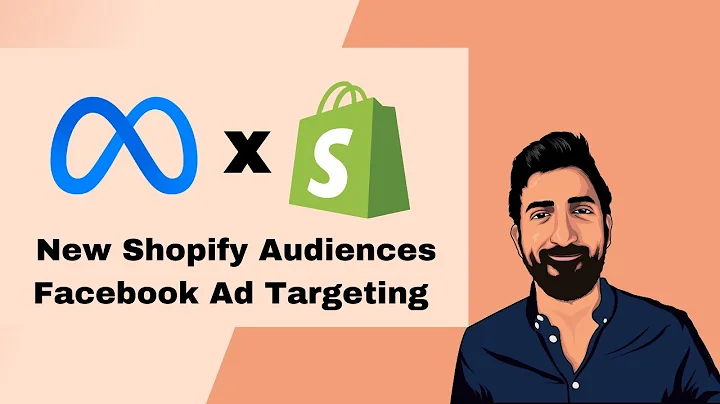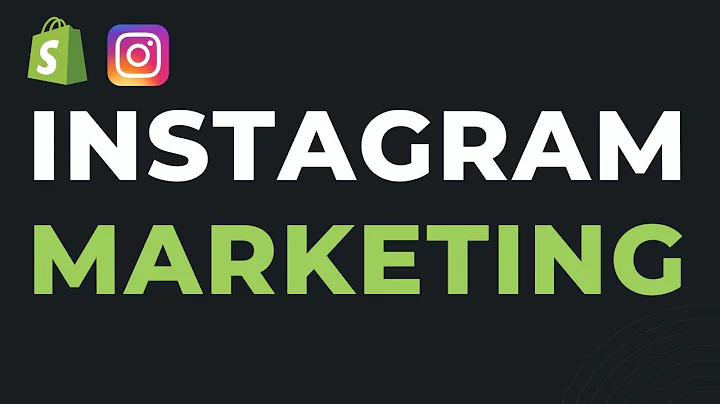Maximizing Your Marketing Efforts with Custom Audiences and Look-alikes
Table of Contents
- Introduction
- What are Custom Audiences?
- Creating Custom Audiences
- 3.1 Traffic-Based Custom Audiences
- 3.2 Engagement-Based Custom Audiences
- 3.3 Niche-Based Custom Audiences
- Look-alike Audiences
- 4.1 Understanding Look-alike Audiences
- 4.2 Creating Look-alike Audiences
- Using Custom and Look-alike Audiences for Targeting and Scaling
- Case Studies and Examples
- Tips and Best Practices for Effective Audience Targeting
- Conclusion
Introduction
In the world of e-commerce, effective marketing is key to success. One important aspect of marketing is audience targeting. By reaching the right audience with your advertisements, you can maximize your chances of converting them into customers.
In this article, we will explore the concept of custom audiences and look-alike audiences and how they can be used to enhance your marketing efforts. We will delve into the process of creating custom audiences based on various factors, such as website traffic, engagement, and niche interests. Additionally, we will discuss the power of look-alike audiences and how they can help you reach new potential customers who share similar characteristics with your existing audience.
By the end of this article, you will have a solid understanding of how to leverage custom and look-alike audiences to target and scale your marketing campaigns effectively.
What are Custom Audiences?
Custom audiences are a powerful tool in digital marketing that allow you to create specific audience segments based on various criteria. These segments can be used for precise targeting and remarketing purposes. Custom audiences are created within platforms like Facebook using data from your own sources, including website traffic, CRM lists, and engagement with your content.
Creating Custom Audiences
3.1 Traffic-Based Custom Audiences
One type of custom audience is based on website traffic. By creating custom audiences for each of your popular products, you can retarget visitors who showed interest in those specific products. For example, if you have a general store and three best-selling products, you can create separate audiences for each of these products. This allows you to retarget people who viewed a particular product or even create a localized audience of people who made a purchase. By using look-alike audiences, you can test new products within a specific niche and target potential customers who have shown interest in your previous products.
3.2 Engagement-Based Custom Audiences
Engagement-based custom audiences are created based on interactions with your content. You can create these audiences by uploading email lists or matching email addresses with Facebook profiles. This allows you to target people who have engaged with your brand through email interactions. Additionally, you can create audiences based on interactions with your website, such as people who have viewed specific pages or completed certain actions like adding items to a cart or initiating checkout. These audiences can be used for retargeting purposes or for creating look-alike audiences.
3.3 Niche-Based Custom Audiences
Niche-based custom audiences are particularly useful if you have a store focused on a specific niche. By creating a master audience of people who have visited your store, you can target this audience with new products within that niche. This can be beneficial for launching new products to an already interested audience. Additionally, you can create niche-specific audiences by creating custom combinations based on specific URLs or events related to your niche. For example, you can include all the URLs of products in a certain collection to create an audience interested in that specific niche.
Look-alike Audiences
4.1 Understanding Look-alike Audiences
Look-alike audiences are audiences created by platforms like Facebook that resemble your existing custom audiences. These audiences are generated based on various characteristics and behaviors of the people in your custom audience. Look-alike audiences are a powerful tool for reaching new potential customers who share similar interests and behaviors with your existing audience. They can be used to expand your reach and target a broader audience that is likely to be interested in your products or services.
4.2 Creating Look-alike Audiences
Creating look-alike audiences is a straightforward process. It starts with selecting a source audience, which is a custom audience you have already created. This source audience serves as the foundation for generating similar audiences. You can choose the size of the look-alike audience by selecting a percentage of the population. Generally, starting with a 1% look-alike audience is recommended for the most relevant matches. You can create multiple look-alike audiences based on different percentages for further testing and targeting.
Using Custom and Look-alike Audiences for Targeting and Scaling
Custom and look-alike audiences are essential tools for targeted marketing and scaling your business. By using custom audiences for retargeting and localized targeting, you can reach people who have already shown interest in your products. Look-alike audiences allow you to expand your reach and target new potential customers who share characteristics with your existing audience. These strategies can lead to higher conversions and increased revenue for your business.
Case Studies and Examples
To better understand the effectiveness of custom and look-alike audiences, we will explore case studies and examples of successful audience targeting strategies. These examples will demonstrate how businesses have leveraged these techniques to increase their sales and grow their customer base.
Tips and Best Practices for Effective Audience Targeting
To make the most of custom and look-alike audiences, it is important to follow certain tips and best practices. This section will provide valuable insights on how to optimize your targeting efforts, such as selecting the right sizes for look-alike audiences, testing different percentages, and monitoring audience performance. By implementing these strategies, you can fine-tune your marketing campaigns and achieve better results.
Conclusion
Custom and look-alike audiences are valuable tools in the world of digital marketing. By leveraging these tools, you can target the right audience with precision, increase engagement, and drive sales. Understanding how to create custom audiences based on website traffic, engagement, and niche interests, as well as how to generate look-alike audiences, is crucial for scaling your business and achieving marketing success. With the right strategies and best practices, you can maximize the effectiveness of your audience targeting efforts and achieve your business goals.






















